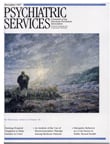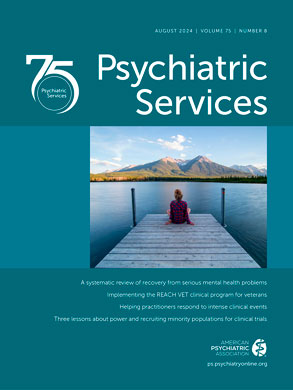The last decade has seen public fascination with erotic relationships between powerful adults and their less powerful counterparts. The public debate on childhood sexual abuse, Anita Hill's sexual harassment charges against Clarence Thomas, the allegations of sexual impropriety made about psychiatrist Margaret Bean Bayog, and now the allegations of sexual misconduct made about the President of the United States have forced our society to struggle with the moral limits of sexual conduct between those who hold power and those who don't. As a society, we have been trying to define what constitutes coercion and whether sexual behavior between unequals can ever be considered mutual. In the Oval Office, the classroom, the boardroom, or the therapy room, true intimacy and love seem to be imperiled.
Some of the questions dividing our nation are taken up in psychologist Susan Baur's new book, The Intimate Hour: Love and Sex in Psychotherapy. The author asks whether it is ever possible to enter into an intimate and erotic therapeutic relationship that is not exploitative. She also poses the question of whether there can ever be a successful psychotherapy without love between therapist and client.
The first question Dr. Baur explores is whether the love between a doctor and patient, regardless of betrayal or abuse, can ever be curative. Citing the marriages between priests and parishioners, and therapists and patients, she begins by exploring the love affairs of two famous analysts, Carl Jung and Sandor Ferenczi. While married, Jung entered into a passionate 12-year relationship with Sabina Spielrein, who was then 19 years old. She was institutionalized and had been diagnosed as having a psychotic hysteria when her treatment began with Jung. In the course of their tumultuous love affair, Spielrein became well enough to attend and graduate from medical school and analytic training. A prolific writer, she later analyzed Jean Piaget.
For Jung, the relationship provided a sympathetic muse and a soulmate on his creative journey. While Spielrein's letters and journals suggest that the relationship was tortuous and the cause of great bouts of depression, she also saw Jung as a source of inspiration for her own creative work. Was this simply an exploitative relationship? Or was it, Baur asks, a relationship that offered healing to both the patient and the doctor?
Baur goes on to describe Sandor Ferenczi's relationship with his then-married patient, Gizella Palos. When Ferenczi wrote Freud about this love affair, Freud was, as he had been with Jung, initially indulgent. But when Ferenczi fell in love with Gizella Palos' daughter as well, Freud angrily intervened, charging that Ferenczi's behavior threatened the entire field of psychoanalysis.
Ultimately Palos' daughter was sent to Freud for an analysis. She eventually lived out a loveless marriage and a bleak adult life. On the other hand, Ferenczi married her mother and succeeded in achieving lifelong marital contentment. Could Ferenczi, asks Baur, have developed his theory of mutual analysis without these intense interpersonal experiences? Should his ultimately stable marriage to Palos be judged simply as exploitative?
It is rare to ask these questions, because to the well-trained clinician the answers seem self-evident. What is very clear—and Baur attends to this point well—is that the answers to such questions are always socially and culturally constructed and that the moral discourse is always shaped by the historical time in which they are asked. Both Jung and Ferenczi lived in a time in which patriarchal relationships were normative, and women were largely objects of desire.
But by the late 20th century, within the context of feminism, our society has declared any sexual intimacy between therapist and patient to be both unethical and unacceptable. The codes of ethics of the American Psychological Association, the American Psychiatric Association, and the National Association of Social Workers, developed between 1977 and the present, are very clear in prohibiting sexual intimacies between therapists and the people they treat and train. These codes have been developed in a social era of increased attention to women's rights and sensitivity to violence against women.
However, in The Intimate Hour Dr. Baur maintains that she is apprehensive about legislating moral behavior. In fact, she makes the case that the overregulation of intimacy between patient and client is unfortunate and robs the therapeutic encounter of some of its creative potential. She fears a backlash from therapists, who, too greatly constrained, may act out toward their clients. She worries that clients who feel increasingly isolated and estranged by overregulation of their intimate encounters with their therapists may take their troubles to increasingly angry men. She writes, "How disturbing for a technologically sophisticated society to discover that a form of intimacy akin to love and closely allied to desire may lie at the heart of one person's ability to help another."
Herein lies the problem. Dr. Baur is unable to clearly distinguish between love in psychotherapy and erotic love that is acted on. It is a little like taking Winnicott's concept of "holding" and suggesting that it is really acceptable for a therapist to hold a client.
That is, the author turns to several important current relational sources, Christopher Bollas, Leston Havens, and Michael Tansey, all of whom have written about love and eroticism in the countertransference. But none of these analysts have ever suggested that falling in love with one's patient means sexually acting on these feelings. Neither would they suggest that a mother who falls in love with her child should be permitted to sexually act on those feelings. Loving therapists, like loving parents, do not freely act on their own loving impulses. And because they must maintain their authority and their power, they maintain their boundaries and limits. Although Baur laments limits, it seems to me that only when the therapist establishes and maintains the frame can both patient and therapist be free to fully love.
Instead Baur turns to Annie Rogers' A Shining Affliction and Carter Heyward's When Boundaries Betray Us as reliable first-person accounts of how maintaining the frame was detrimental to the client. Having read both women's books about their own failed treatments, I am not convinced that the dissolution of boundaries, including physical boundaries, that both women advocate was therapeutic. Yet Dr. Baur increasingly asserts that the therapeutic profession is overly conventional, regulated by rule makers who rob therapists and patients of their creativity.
According to Baur, psychiatrist Bean Bayog's unconventional treatment of Paul Lozano (in which she is alleged to have written extensive notes of her sexual fantasies about the client, to have physically masturbated with him, and to have had him call her Mommy) was a step backward for psychiatry in that it forced those engaged with very sick patients to practice defensively. Frankly, after that case, psychiatry should be practiced defensively. It is my own conviction that clear and explicit limits on sexual behavior in therapeutic practice must be maintained. As a result, I had increasing difficulty with Baur's attempt to maintain the complexity of the love in the therapeutic encounter, on the one hand, and her moral relativism, on the other.
Finally, because the author does not distinguish clearly between love and sexuality, she locates herself in an ethical morass in which therapists are largely portrayed as overregulated male victims whose power attracts and excites women. She writes: "Female patients, like females for half a million years, are likely to be attracted to the most powerful and established males in the community—older men who can protect them and their offspring and who presumably have genes that will ensure success for their children. Women are attracted to men who are competitive, assertive—if not downright aggressive—and physically robust. In other words, they are attracted to potent males or healers with relatively high levels of testosterone. They are primed to say yes to such a man. Psychotherapy is rapidly turning into a field that is much less welcoming to the potent, macho healer. Perversely, I am saddened by this."
Ultimately, I also was saddened, but by a book that laments the loss of the macho healer and takes the position that the rules and standards of sexual conduct make the therapeutic encounter too arid. Although in The Intimate Hour Baur tries to maintain that love and pleasure are the very stuff of therapy, a point with which I would not disagree, her argument fails by confusing love with sexual acting out, and countertransference love with erotic love. Just as good parenting requires rules, boundaries, and limits, I would be a lot more comfortable with a conclusion that recognizes the value of maintaining the therapeutic frame at all cost.
Nonetheless, this is a very provocative book, which made me in fact define some of my own limits, and for that I found it a valuable and worthwhile encounter.

